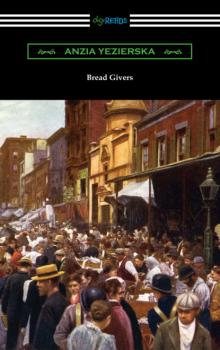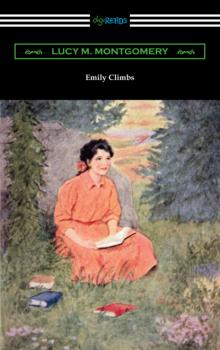Зарубежная классика
Различные книги в жанре Зарубежная классикаThe Painted Veil
First serialized in 1924 and published as a complete novel in 1925, “The Painted Veil” is the powerful novel of transgression and redemption by popular and prolific British author W. Somerset Maugham. “The Painted Veil” tells the story of the lovely and superficial Kitty Garstin and her unhappy marriage to Walter Fane, a quiet and honorable man. Kitty agrees to marry Walter not because she loves him, but because she fears being upstaged by her younger sister. Kitty travels to Tching-Yen with her new husband, where he is posted as a government scientist, and Kitty soon falls in love with her husband’s colleague, the handsome and charming Charlie Townsend. Walter is not as clueless about her behavior as Kitty would like to believe, and eventually rejected by her selfish lover, he has her travel with him to mainland China to help during a dangerous cholera epidemic. The experience utterly transforms Kitty and she begins to take responsibility for her mistakes and understand her shortcomings. Beautiful and deeply affecting, “The Painted Veil” is a thought-provoking study of the ability of people to change, grow, and learn how to love deeply. This edition includes a biographical afterword.
Bread Givers
First published in 1925, Anzia Yezierska’s “Bread Givers” is the tale of a young Jewish-American immigrant woman and her struggle to control her own destiny in Manhattan’s Lower East Side at the turn of the century. The novel is based in large part on Yezierska’s own life experiences immigrating from Poland as a child and growing up in New York City in an Orthodox Jewish family. “Bread Givers” centers on the story of its main character, Sara Smolinsky, who lives with her older sisters and parents in a poor tenement in the Lower East Side. The Smolinsky family is destitute and struggles to make ends meet as the father, Reb, refuses to work and spends all his time studying the Torah and clinging to the traditions of the country he left behind. He arranges unhappy marriages for his older daughters in the hope of becoming rich himself. Sara vows to avoid her sisters’ fates and takes her life into her own hands, pursuing an education and refusing to marry just because it is expected of her. “Bread Givers” is both an engaging portrait of New York at the beginning of the twentieth-century and a timeless tale of a young woman’s journey of self-discovery and determination.
The Professor's House
First published in 1925, “The Professor's House” is the profound study of a middle-aged man’s unhappiness by critically acclaimed American author Willa Cather. The novel tells the story of its central character, Professor Godfrey St. Peter, in three parts. In the first part, the Professor feels that he is losing control over his life and resists the direction it is taking. He is displeased with his family’s move to a new house, with his daughters being grown and married, and with the death of Tom Outland in the First World War, who was a beloved student and the fiancé of his oldest daughter. In the second part, the Professor recalls the first-person account of Tom and his explorations in New Mexico. Tom’s goodness and love of nature are a sharp contrast to the materialism and superficiality of the Professor’s new son-in-law and his death has been a great loss to the family. The third section finds the Professor alone, despondent, and losing his will to live while secluded in his old study as the rest of his family is off on vacation. “The Professor’s House” is a moving and affecting study of fear, mortality, and one man’s struggle to find meaning in his changing life. This edition includes a biographical afterword.
Arrowsmith
First published in 1925, Sinclair Lewis’ “Arrowsmith” is the fascinating tale of a man torn between the pursuit of scientific knowledge and the demands of everyday domestic life. “Arrowsmith” was published to great critical acclaim, being awarded the Pulitzer Prize in 1926, and has endured as the author’s most popular novel. It is the story of Martin Arrowsmith, an intelligent and scientific young man who leaves his small Midwestern hometown to attend medical school and become a doctor. Along the way he lives his personal life haphazardly while he struggles to devote more of his time and attention to his scientific endeavors. The tension between his family and his life of rigorous and exacting scientific pursuit come to a dramatic head during an outbreak of bubonic plague on a tropical island. Martin must make difficult decisions between his principles, his research, and his ethical obligations. “Arrowsmith” is a well-researched and detailed description of medical training and practice, as well as an intense character study and thought-provoking examination of the tension that exists between everyday life and the rigorous pursuit of scientific inquiry. This edition includes a biographical afterword.
An American Tragedy
First published in 1925, Theodore Dreiser’s “An American Tragedy” is widely considered to be one of the best American novels of the twentieth-century. It is the classic tragedy that follows the rise and fall of its central character, the social climbing and self-absorbed Clyde Griffiths. Clyde, raised by very poor and devout parents, has always dreamed of being and having more. He quickly falls under the spell of his richer and wilder co-workers at the prestigious hotel in Kansas City where he works as a bellhop and he is willing to do terrible things to be a part of their world. Clyde’s sense of moral responsibility and decency begin to fade as he flees the scene of a senseless crime and his poor choices continue to follow him into the new life he tries to create for himself in New York. Soon he is caught up in a love triangle and his callousness and impulsiveness lead him to decisions with tragic and far reaching consequences. “An American Tragedy” is an absorbing and impressively detailed character study and a masterful exposition on the destructive powers of ambition, greed, and economic inequality. This edition includes a biographical afterword.
Emily Climbs
First published in 1925, “Emily Climbs” is the second book in the “Emily” series by Canadian author Lucy Maud Montgomery. Written two years after the first novel in the series, “Emily of New Moon”, “Emily Climbs” finds Emily Byrd Starr and her new local friends growing up and becoming teenagers. Emily longs to attend the Queen’s Academy in order to get her teaching license, but her conservative relations oppose this idea. Instead, she is allowed to go to Shrewsbury High School with her friends, but must live with her strict Aunt Ruth and is forbidden by her family from writing poetry. Emily refuses to be daunted by these restrictions, continues to work on her writing, and finds success with her short stories and work on the local newspaper. Romantic dramas complicate Emily’s relationships, while she also grows closer to her distant relation, the mysterious Dean Priest. “Emily Climbs” is a timeless and heartfelt coming-of-age story that continues to engage readers may years after its first publication. This edition includes a biographical afterword.
Mrs. Dalloway
Widely heralded as one of the first truly modern novels, Virginia Woolf’s “Mrs. Dalloway” was published in 1925 and is one of the author’s most popular and critically acclaimed works. All of the events of the novel take place on a single day in June 1923 and the novel’s perspective varies often as Woolf journeys inside the minds of many characters as they each experience the day and connect its events to the memories of their past. The two main characters are Clarissa Dalloway, a wealthy woman of high society who is planning a party for that evening, and Septimus Warren Smith, a veteran of the First World War, who continues to suffer from the trauma he experienced on the battlefield. Both characters are constantly aware of the passage of time, as Clarissa often reflects on her happy youth and her missed opportunities for love and passion and Septimus is haunted by his memories of the horror he witnessed and feels death looming ever closer and closer. Heartbreaking and powerfully evocative, “Mrs. Dalloway” is a timeless masterpiece about finding the joy in little things while never completely forgetting the fleetingness of life and the inevitably of death. This edition includes a biographical afterword.









